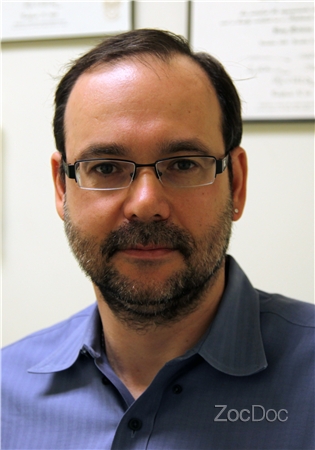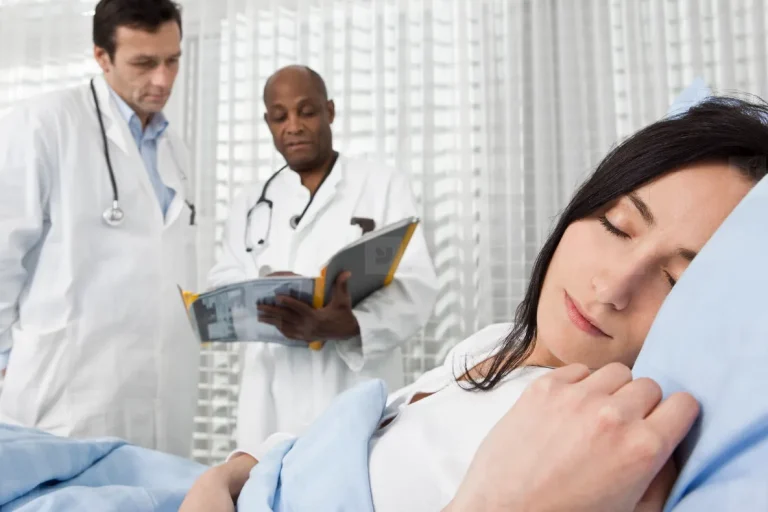Treating Sleep Apnea Without CPAP
You can manage sleep apnea without using a CPAP machine by exploring various alternatives. Consider oral appliances, which a dentist custom-fits to keep your airway open. Making lifestyle changes like weight loss, quitting smoking, and avoiding alcohol can also help. Surgical options such as UPPP and maxillomandibular advancement are viable for some. Myofunctional therapy offers a non-invasive way to strengthen your airway muscles. Discuss these options with your healthcare provider to find what works best for you. To discover more about these alternative treatments, there's much more to learn.
Noteworthy Details
- Consider alternative PAP therapies like BiPAP, APAP, EPAP, cNEP, and OPT.
- Use custom-fitted oral appliances from a dentist to keep the airway open.
- Adopt lifestyle changes such as weight loss, exercise, and quitting smoking.
- Explore surgical options like UPPP, maxillomandibular advancement, and hypoglossal nerve stimulation.
- Engage in myofunctional therapy to strengthen facial and mouth muscles for improved breathing.
Alternative PAP Therapies
When it comes to managing sleep apnea, various alternative PAP therapies like BiPAP, APAP, EPAP, cNEP, and OPT offer personalized treatment plans tailored to individual needs. These therapies provide options beyond traditional CPAP, addressing unique patient requirements and improving comfort and compliance.
BiPAP (Bilevel Positive Airway Pressure) delivers two different pressure settings for inhalation and exhalation, making it easier to breathe out.
APAP (Automatic Positive Airway Pressure) automatically adjusts pressure levels throughout the night based on your breathing patterns.
EPAP (Expiratory Positive Airway Pressure) only provides pressure during exhalation, which can be less intrusive.
cNEP (continuous Negative Expiratory Pressure) and OPT (Oral Pressure Therapy) are innovative approaches that use different mechanisms to keep airways open. These methods emphasize personalization, allowing healthcare providers to create customized treatment plans that cater to your specific needs.
Discussing these alternative PAP therapies with your healthcare provider can help identify the most suitable option for you.
While oral appliances like mandibular advancement devices and tongue retaining devices target anatomical factors, alternative PAP therapies focus on optimizing airway pressure.
Oral Appliances
Exploring beyond PAP therapies, oral appliances offer a non-invasive and custom-fitted solution for those struggling with CPAP intolerance. These devices, resembling mouth guards, are designed to advance your lower jaw forward, which helps keep your airway open during sleep.
By holding the tongue in place or easing the jaw forward, oral appliances can greatly reduce snoring and enhance your breathing patterns.
Dentists who specialize in sleep apnea will custom-fit these appliances to make sure they're comfortable and effective for you. This personalized approach is essential because a well-fitted appliance maximizes both comfort and therapeutic benefits.
As a non-invasive treatment option, oral appliances are particularly appealing for individuals who find CPAP machines intrusive or uncomfortable.
Regular adjustments and monitoring are vital to maintain the best fit and effectiveness of these appliances. Your dentist will likely schedule follow-up visits to make necessary adjustments, ensuring the appliance continues to provide maximum snoring reduction and breathing improvement.
This ongoing care helps address any issues promptly, enhancing your overall comfort and treatment efficacy.
Lifestyle Changes
Incorporating lifestyle changes like weight loss and regular exercise can greatly alleviate sleep apnea symptoms and enhance overall well-being. Weight loss is particularly effective, as reducing excess weight decreases the fat deposits around your upper airway, thereby reducing the likelihood of obstruction during sleep. Regular exercise not only aids in weight loss but also improves respiratory strength and overall cardiovascular health, which can help lessen the seriousness of sleep apnea.
Quitting smoking is another critical lifestyle change. Smoking irritates the upper airway, causing inflammation and congestion, which can worsen sleep apnea. Nasal decongestants can also be beneficial in relieving nasal congestion, promoting better airflow during sleep. Alcohol avoidance is equally important, as alcohol relaxes the throat muscles, increasing the risk of airway collapse.
Changing your sleeping position can make a notable difference. Sleeping on your side rather than your back helps to keep your airway open, reducing the frequency of apnea events.
Making these healthier choices isn't only cost-effective but also empowers you to take control of your condition. By adopting these simple lifestyle adjustments, you can markedly reduce the seriousness of sleep apnea and improve your overall quality of life.
Surgical Interventions
When considering surgical interventions for sleep apnea, you'll find several options like UPPP and maxillomandibular advancement, each with specific benefits and risks.
It's essential to understand the recovery process and aftercare involved to make an informed decision.
Let's explore these surgical treatments to see if they're the right fit for your condition.
Types of Sleep Apnea Surgery
For patients with sleep apnea who don't respond to CPAP therapy, various surgical interventions offer alternative treatments aimed at improving airway patency and enhancing sleep quality.
One common procedure is UPPP (uvulopalatopharyngoplasty), which removes excess tissue from the throat, widening the airway.
Another effective option is maxillomandibular advancement surgery, which repositions the jaw to increase the size of the airway and improve breathing during sleep.
In more severe cases, a tracheostomy might be necessary. This involves creating a hole in the neck to bypass upper airway obstructions, ensuring a direct air passage.
Hypoglossal nerve stimulation is a newer technique that implants a device to stimulate the muscles of the tongue, preventing airway collapse during sleep. This method is particularly beneficial for patients who experience tongue-related obstructions.
For children suffering from sleep apnea, an adenotonsillectomy can be highly effective. This surgery removes the tonsils and adenoids, which are common sources of obstruction in pediatric patients.
Each of these surgical interventions aims to address the underlying anatomical issues contributing to sleep apnea, offering personalized solutions for improved sleep and overall health.
Benefits and Risks
While surgical interventions can effectively treat severe sleep apnea by addressing anatomical issues, it's important to weigh the benefits and risks to determine the most appropriate treatment for each patient.
Procedures like UPPP (uvulopalatopharyngoplasty), maxillomandibular advancement surgery, and tracheostomy aim to alleviate airway obstruction caused by factors such as enlarged tonsils, excessive throat tissue, or misaligned jaw positioning.
The benefits of these surgeries include significant improvement in sleep quality and a reduction in apnea episodes. For instance, maxillomandibular advancement surgery repositions the jaw to enlarge the airway, while hypoglossal nerve stimulation prevents tongue collapse. Adenotonsillectomy, particularly common in children, can dramatically reduce symptoms by removing obstructive tonsils and adenoids.
However, these surgical interventions come with risks. Complications can include infection, bleeding, and prolonged pain. Tracheostomy, often a last resort, involves a permanent opening in the windpipe and carries risks of infection and long-term care needs. UPPP and other tissue-removal surgeries might result in swallowing difficulties or altered speech.
Ultimately, the decision to pursue surgical interventions should be made collaboratively between you and your healthcare provider, carefully considering the benefits and potential risks to optimize your treatment outcome.
Recovery and Aftercare
After surgical interventions for sleep apnea, you'll likely need a carefully structured recovery plan to manage symptoms and ensure maximum healing. Postoperative care will involve several key components aimed at facilitating your recovery and minimizing potential complications.
| Aspect | Details |
|---|---|
| Pain Management | Utilize prescribed medications to control pain and reduce inflammation. |
| Dietary Restrictions | Follow a soft or liquid diet initially to ease swallowing difficulties. |
| Follow-up Appointments | Schedule regular visits with your healthcare provider to monitor healing and address any issues. |
Recovery times can vary, with some procedures requiring several weeks for full recovery. During this period, it's important to adhere to recommended lifestyle changes such as avoiding strenuous activities and maintaining a healthy diet to support your body's healing process.
Monitoring for signs of infection, bleeding, or breathing difficulties is crucial. Any unusual symptoms should be reported to your healthcare provider immediately to prevent complications. Adhering to your aftercare plan, including pain management and dietary guidelines, will greatly influence your recovery quality.
Myofunctional Therapy
Myofunctional therapy offers a non-invasive approach to strengthening facial and mouth muscles, aiming to improve breathing and reduce airway blockage during sleep. This therapy involves specific exercises designed to target and enhance the function of these muscles.
By focusing on correcting tongue positioning and swallowing patterns, myofunctional therapy can effectively prevent airway obstruction, a common issue in sleep apnea patients.
Engaging in these exercises regularly helps in optimizing the muscle tone around your airway, which can lead to significant improvements in breathing during sleep. This non-invasive treatment can also complement other sleep apnea treatments, making it easier for you to adhere to CPAP therapy if prescribed.
Enhanced muscle strength and better breathing patterns can result in increased CPAP compliance, thereby improving the overall effectiveness of your sleep apnea management plan.
Moreover, the consistent practice of myofunctional exercises can contribute to long-term improvement in sleep apnea symptoms, enhancing your overall well-being. The therapy provides a holistic approach by addressing root causes like improper tongue positioning and inefficient swallowing patterns, ensuring sustained benefits without the need for invasive procedures.
Insurance Coverage
When considering alternatives to CPAP, it's essential to understand your insurance coverage for treatments like oral appliances. Many insurance plans, including private insurers, Medicaid, and Medicare Part B, may cover these alternatives, but coverage details can vary.
Consult your healthcare provider to navigate your specific insurance plan and guarantee you receive the appropriate reimbursement.
Coverage for Oral Appliances
Many insurance plans, including some private providers, Medicaid, and Medicare Part B, may cover oral appliances for treating sleep apnea, provided you have a formal diagnosis and a prescription from your healthcare provider. These alternative treatments can offer effective relief without the need for CPAP. However, insurance coverage for oral appliances can vary significantly depending on your plan.
To get started, consult your healthcare provider for a sleep apnea diagnosis and a prescription. Your dentist, specializing in sleep apnea treatment, can then guide you through the process. It's essential to check with your insurance provider to understand the specific coverage details for these devices.
Here's a quick overview:
| Insurance Type | Coverage Criteria | Action Steps |
|---|---|---|
| Private Insurance | Diagnosis, prescription | Confirm specifics with your provider |
| Medicaid | Diagnosis, prescription | Check state-specific Medicaid guidelines |
| Medicare Part B | Diagnosis, prescription, dentist consultation | Verify all criteria are met to qualify for coverage |
Alternative Therapy Reimbursement
Understanding insurance reimbursement for alternative sleep apnea therapies requires a clear understanding of your specific plan's criteria and coverage. Insurance coverage for alternative therapies, such as oral appliances, can differ widely among providers. Private insurance plans, Medicaid, and Medicare Part B may cover these non-CPAP therapies, but the extent of coverage often hinges on your diagnosis and the documented medical necessity of the treatment.
To navigate this landscape, start by consulting with your healthcare provider. They can provide the necessary documentation and a formal diagnosis, both of which are essential for reimbursement. Insurance companies typically require evidence of medical necessity to approve coverage for alternative treatments. Without this documentation, securing reimbursement can be challenging.
Next, reach out to your insurance company to understand your plan's specifics. Ask about coverage for oral appliances and other non-CPAP therapies. Be prepared to provide details from your consultation and diagnosis to support your case. Clarifying these details upfront can save you from unexpected out-of-pocket costs.
Frequently Asked Questions
Can Sleep Apnea Be Cured Without Cpap?
Yes, you can manage sleep apnea without CPAP through lifestyle changes, oral appliances, weight loss, positional therapy, acupuncture therapy, yoga exercises, herbal remedies, hypnosis therapy, breathing exercises, or surgery options. Consult a sleep specialist for personalized advice.
How Do You Fix Sleep Apnea Naturally?
To fix sleep apnea naturally, focus on lifestyle changes, weight loss, and sleep position. Incorporate breathing exercises, tongue exercises, and yoga poses. Consider herbal remedies, essential oils, acupuncture therapy, and mouth guards for additional support.
What Is the Newest Treatment for Sleep Apnea?
Don't worry if you've tried everything else. The newest treatment for sleep apnea is Inspire Therapy, a hypoglossal nerve stimulation implant. It's shown to help when oral appliances, positional therapy, and other treatments haven't worked.
What Happens if You Have Sleep Apnea and Don't Use Cpap?
If you have sleep apnea and don't use CPAP, symptoms may persist. Consider lifestyle changes, oral appliances, surgery options, weight loss, positional therapy, nasal strips, acupuncture benefits, yoga techniques, throat exercises, and aromatherapy benefits to mitigate effects.
Conclusion
You've got plenty of options for tackling sleep apnea without relying on CPAP.
From alternative PAP therapies and oral appliances to lifestyle changes and surgical interventions, there's a solution that can fit your needs.
Think of your treatment journey like a toolbox— you have many tools at your disposal.
With evidence-backed, patient-centered care, you'll find the right combination to improve your sleep and overall health.
Don't hesitate to explore these avenues with your healthcare provider.


